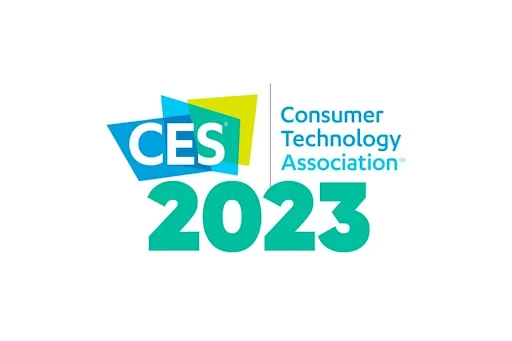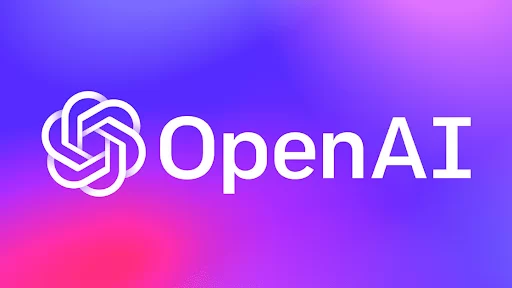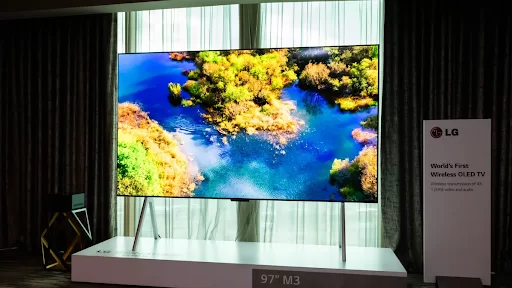AI/ML
CES 2023: Top Takeaways from Biggest Tech Event of the Year
Top Things We Learned from CES 2023
CES 2023 has once again come and gone, leaving us with a glimpse into the future of technology. The Consumer Electronics Show, held annually in Las Vegas, is the world’s largest tech event, where the biggest and brightest minds in the industry showcase their latest innovations. This year’s show came with an impressive array of cutting-edge products and technologies.
From the latest advancements in AI and robotics to the latest trends in wearable technology, CES 2023 has something for everyone. With over 3200 exhibitors showcasing their latest products and innovations, keeping track of all the new and exciting developments can be overwhelming.
In this blog, we’ll be breaking down the top things we learned from CES 2023, highlighting the most innovative products and technologies that are set to shape the tech industry’s future.
To keep you on track with CES, we’ll also talk about the highlights of CES 2020 till 2022.
7 Advantages of Participating in CES – The Leading Tech Event in the World

Attending the CES event, or the Consumer Electronics Show, offers many benefits for individuals and businesses in the tech industry. Here are some of the key advantages of attending this major tech event:
1. Access to new and innovative technologies
CES provides a platform for companies to showcase their latest products and innovations, allowing attendees to see and experience new technologies firsthand. This can be particularly useful for businesses looking to stay up-to-date on the latest advancements in their industry.
2. Networking opportunities
CES attracts a diverse range of attendees worldwide, including tech professionals, investors, journalists, and more. This presents an opportunity to network with like-minded individuals, forge new business relationships, and gain insights from industry experts.
3. Industry insights
CES also offers a range of informative talks, presentations, and panel discussions from industry leaders, providing insights into current and future trends in the tech industry.
4. Media exposure
CES events can also provide businesses with media exposure, particularly if they are showcasing new products or innovations. This can help to generate buzz and interest in their offerings, potentially leading to increased sales and partnerships.
5. Inspiration and motivation
Attending CES is an inspiring and motivating experience, fueling creativity and innovation in attendees. It can provide a glimpse into the future of tech and offer exciting opportunities for businesses and individuals to explore new ideas and approaches.
6. Potential partnerships and collaborations
CES events are a hub for potential partnerships and collaborations. Attendees can meet with potential partners, investors, and customers, opening up opportunities for future collaborations. Companies can also explore potential partnerships with other companies, startups, and industry leaders.
7. Competitive analysis
CES is a great opportunity to conduct competitive analysis and stay updated with industry developments. Attendees can see what their competitors are doing and gain insights into their strategies and product offerings. This can help companies stay ahead of the curve and remain competitive.
Attending CES can be a valuable investment for anyone in the tech industry, offering numerous benefits and opportunities to stay ahead of the curve in a rapidly evolving field.
Now, let’s look at the key takeaways from previous CES events.
6 Top things we learned from CES 2023
1. Prioritizing performance will skyrocket
According to Joanna O’Connell’s presentation of Mediaocean’s recent report on the market, marketers are likely to prioritize performance-driven paid media in the face of uncertainty in 2023. However, they will not do so at any cost.
Their survey of over 600 marketing executives revealed that brand advertising is deemed critical by more than a third of respondents. Demand generation is similarly valued by nearly a quarter of them. This suggests that marketers recognize the importance of generating demand in the first place, as it is crucial to later conversion.
Thus, while performance is essential, it should not come at the expense of building brand recognition and demand.
2. Ads needs a customer-centric approach
During a discussion on customer experience (CX) at a recent industry conference, it was noted that despite the many conferences dedicated to CX, the industry has yet to prioritize the customer.
Ben Kartzman, COO of Mediaocean, showed how brands could adapt ad creative to function differently on mobile versus connected TV while maintaining uniqueness. Brands are seeking to balance the urge to stand out with the need to respect their customers.
Tim Natividad, US Head of Enterprise Sales at TikTok, emphasized the importance of brands reaching consumers through the creator. He added that this approach represents a generational shift towards creator-led advertising.
Overall, it is clear that brands must prioritize CX and find new ways to reach their audiences while respecting their customers.
3. Growing authority of AI
Artificial intelligence (AI) in the advertising industry has typically focused on automating time-consuming tasks such as creating creative content and streamlining reporting.

However, recent advancements in AI technology, including OpenAI’s ChatGPT and DALL·E 2, as well as the emergence of startups tailored specifically to marketers’ needs, have ushered in a new era that allows marketers to achieve what was once thought impossible.
This shift was discussed in a panel titled “Develop an Automation Strategy Before Automation Does It for You,” which featured industry experts such as:
- Jason White, Co-Founder and President of JIFFY.ai Media
- Tameka Kee, Advertising Futurist and the new Deputy Managing Director of CIMM
- Scott Messer, Principal and Founder of Messer Media
The panel highlighted the importance of marketers taking control of automation to ensure they utilize these technologies effectively and efficiently.
4. Time for phone screens to bend and flex
CES is not known for showcasing new phones, but Samsung generated some excitement by revealing a concept device with a flexible and foldable screen.
The Flex Hybrid, displayed by Samsung Display and not the electronics division, is expected to be available sometime soon. However, it provides a glimpse of the potential of foldable phones and where phone technology could go.
The lack of emphasis on 5G technology was also notable, as it has yet to live up to the hype as a transformative innovation. The CTA believes 5G will still be relevant but with a more practical focus on business applications and devices.
5. Home setup got even smarter (and simpler)
Matter, an open-source smart home protocol that boasts compatibility with major voice assistants such as Alexa, Google Assistant, and Siri, has finally launched after several delays in 2019.
Backed by tech giants like Amazon, Apple, Google, and Samsung, Matter promises to be a unifying Wi-Fi-based standard that simplifies smart home device compatibility.
The recent CES showcased numerous Matter-compatible devices like smart lights, smart plugs, and roller blinds, with more device types, such as smart home cameras and robot vacuums, in future releases.
What’s particularly intriguing is how Matter makes previous-generation gadgets from its supporting brands compatible with the new standard. Some companies, like Eve, can upgrade their older devices with a software update, while others, like GE Lighting or Govee, require users to purchase new, Matter-compliant devices.
However, this approach may upset customers attached to their existing devices. Hence, it remains to be seen if Matter can deliver on its promise of seamless smart home integration in what promises to be another exciting year for the industry.
6. Time for no gimmicks in TV
TV manufacturers have shifted their focus from useless features to practical value, as evidenced by the latest offerings at CES.
LG showcased a 97-inch OLED TV with a high 4K resolution and an ultrasmooth 120Hz presentation, but the real selling point was that it was entirely wireless, except for the power cord.

Samsung also showcased a 77-inch QD-OLED, which is the first of its kind at this screen size and should help Samsung compete with LG and bring prices down.
Samsung’s 8K projector called The Premiere can turn any wall into a 150-inch screen, and it is designed to sit just a few inches from the wall, making it accessible even to those in small apartments.
The trend of practical home entertainment devices that directly address the needs of most consumers is hoped to continue.
6 Key takeaways from CES 2022
- Smart glasses remain a niche market despite several vendors introducing new or improved products at CES 2022.
- The smart home market segment received significant attention at CES 2022 due to the increased amount of time consumers are spending at home during the pandemic.
- LG and Samsung are incorporating fitness apps and cloud gaming into their proprietary streaming platforms for smart TVs.
- Digital health, including sensors, femtech, and virtual reality, was a significant topic at CES 2022, with increased funding and investor interest.
- Small players at CES 2022 are building the next version of the internet or metaverse, with mixed thoughts on heavyweight influencers like Meta Platforms Inc.
- The Consumer Technology Association expects revenue in the consumer tech industry to reach $505 billion for 2022, up 2.8% from 2021, headwinds from supply chain constraints add uncertainty to the forecast.
6 Key takeaways from CES 2021
- The pandemic has driven healthcare advancements, and companies like Philips are developing telehealth solutions like virtual healthcare neighbourhoods, sleep apnea support, and personal at-home healthcare.
- The gaming industry has seen a boost, with Intel, AMD, and NVIDIA making improvements in CPUs and GPUs. NVIDIA updated its GeForce RTX graphics card, and AMD announced its Ryzen 5000 series.
- Autonomous vehicles are still a popular concept, and although we may not see fully autonomous vehicles on the road in 2021, companies are making progress with technology such as Mobileye’s camera-first sensing technology, crowdsourced maps, and driving policies.
- Caterpillar has developed a self-driving mining truck that could revolutionize the mining industry and be adapted to other industries like trucking and shipping.
- Virtual reality is becoming more advanced with haptic feedback gloves, like SenseGlove Nova, which could be used in training or creating physical prototypes.
- Companies are responding to remote work with new products and updates to improve the home work environment. Dell, Microsoft, and HP are debuting new laptops, video conferencing monitors, and other devices to make work more accessible for people working from home.
6 Key takeaways CES 2020
- Ingredient technologies like AI, AR, robotics, 5G connectivity, and IoT create new opportunities for innovation, resulting in amazing products that can improve people’s lives.
- Every company is becoming a technology company, with car manufacturers and airlines investing in new hardware and software solutions that improve the customer experience.
- Partnerships are becoming increasingly important as companies combine their skills to solve big problems, resulting in accelerated speed to market and shortened development cycles.
- Industry lines are blurring, with companies from adjacent and sometimes far-flung industries coming together to transform and innovate.
- Mobility is becoming autonomous, shared, and multimodal, with the shared economy expected to become a part of mobility and vehicle ownership likely to diminish.
- Cybersecurity is a top-of-mind issue that could slow or stop the adoption of certain technologies, with data security being seen as fundamental to the success of these technologies.
Reflecting on CES 2023: Key Takeaways and Insights for the Future
Throughout the CES event, we have seen many exciting new products and technologies, including AI-powered robots, foldable smartphones, autonomous vehicles, and more. We have also seen a strong emphasis on sustainability, with many companies showcasing environmentally friendly products.
As we move forward, it is clear that technology will continue to shape our world in profound ways. From smart homes to smart cities, the possibilities are endless. However, it is also important to remember that great responsibility comes with great power.
As technology continues to advance, we must ensure that it is used to benefit society as a whole while minimizing any potential negative impacts.
Overall, CES 2023 has been an exciting event, and at Innovify, we look forward to seeing how the latest technologies will shape our world.



